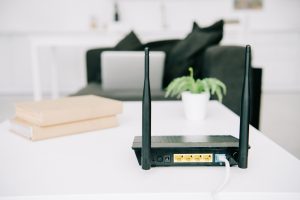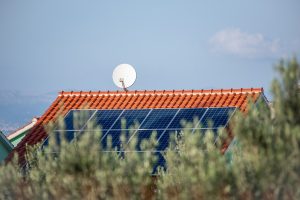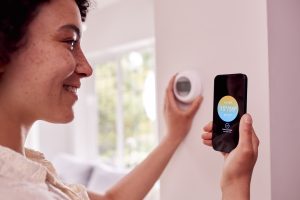Garden offices have become increasingly popular, offering a peaceful workspace away from household distractions whilst avoiding lengthy commutes. However, creating a functional outdoor workspace requires more than just erecting a building—you’ll need a reliable electrical supply to power lighting, heating, computers, and other essential equipment. Understanding what’s involved in installing power to your garden office will help you plan effectively and ensure the work is completed safely and legally.
Initial Planning and Assessment
Before any electrical work begins, a thorough site assessment is essential. A qualified electrician will evaluate the distance from your main house to the proposed garden office location, assess the existing electrical capacity of your property, and consider the route the new electrical supply will take. This assessment determines whether your current consumer unit has sufficient spare capacity to support the additional load or if upgrades are required.
The power requirements of your garden office will significantly influence the installation approach. A basic office requiring lighting and a few power sockets has different needs compared to a studio requiring electric heating, air conditioning, and multiple high-powered devices. Your electrician will calculate the total electrical load to ensure the installation can safely handle your requirements both now and in the future.
Ground conditions and access routes also play crucial roles in planning. Rocky soil, existing landscaping, underground utilities, and narrow access paths can all affect installation methods and costs. A comprehensive site survey identifies these challenges early, preventing costly surprises during installation.
Understanding Building Regulations and Planning Requirements
Most garden offices fall under permitted development rights, meaning planning permission isn’t typically required. However, electrical installations must always comply with Building Regulations Part P, which covers electrical safety in dwellings. This means the work must be carried out by a qualified electrician and either self-certified or inspected by Building Control.
The type of electrical installation required depends largely on your garden office’s intended use and construction. A simple timber structure might only need basic lighting and power circuits, whilst a more substantial building intended for year-round use might require dedicated heating circuits, multiple power outlets, and potentially three-phase supply for heavy equipment.
Location matters significantly when considering regulations. Garden offices situated close to boundaries, near water features, or in areas with overhead power lines face additional safety requirements. Your electrician will identify these considerations during the planning phase and ensure full compliance with relevant standards.
Methods of Power Supply
Several methods exist for supplying power to garden offices, each with distinct advantages and considerations. Underground armoured cable represents the most common and reliable approach for permanent installations. This method involves excavating a trench, typically 600mm deep, laying specially designed armoured cable, and providing adequate protection and warning tape.
Overhead cables offer an alternative where underground installation proves impractical due to existing structures, landscaping, or ground conditions. However, overhead installations must maintain specific clearance distances from buildings, boundaries, and pathways, and may require substantial support structures depending on the span distance.
For temporary or flexible arrangements, some installations use weatherproof external sockets connected via heavy-duty outdoor cable. Whilst less expensive initially, this approach may not be suitable for permanent installations or where cables cross pathways or landscaped areas.
The Installation Process
Professional installation begins with careful marking of the cable route and obtaining any necessary permissions for excavation. Modern installations often use cable detection equipment to locate existing utilities, preventing potentially dangerous and expensive accidents during digging.
Excavation work requires precision, maintaining correct depths whilst avoiding damage to existing services, landscaping, or structures. The trench must be properly prepared with sand bedding where required, and cables must be laid with appropriate slack to accommodate ground movement and thermal expansion.
The electrical connection at both ends requires particular expertise. At the main house, the supply typically connects via a new circuit breaker in the consumer unit, though some installations may require consumer unit upgrades or separate distribution boards. At the garden office end, a weatherproof distribution board provides local switching and protection for lighting and power circuits.
Safety Considerations and Protection
Garden office electrical installations face unique safety challenges due to their outdoor environment and potential isolation from the main building. Residual Current Device (RCD) protection is mandatory for all circuits, providing protection against earth faults that could cause dangerous electric shocks.
Additional protection measures often include surge protection devices to guard against lightning strikes and power surges, and appropriate IP-rated equipment to withstand moisture and temperature variations. All external connections must use weatherproof enclosures, and any external sockets or switches must meet appropriate safety standards.
Emergency isolation is another crucial consideration. Your electrician will install appropriate isolation switches, allowing the garden office power supply to be safely disconnected for maintenance or in emergency situations.
Internal Electrical Work
Once the supply reaches your garden office, internal electrical work can commence. This typically includes installing a consumer unit or distribution board, running cables for lighting circuits, installing power outlets in appropriate locations, and potentially adding dedicated circuits for heating, air conditioning, or high-power equipment.
The internal layout should consider both current needs and future requirements. Additional power outlets are relatively inexpensive to install during initial construction but costly to add later. Similarly, planning for potential equipment upgrades, such as electric heating or workshop tools, can save significant expense and disruption in the future.
Lighting design deserves particular attention in garden offices. Adequate task lighting for computer work, general ambient lighting, and external security lighting all contribute to a comfortable and functional workspace. Modern LED lighting offers excellent energy efficiency and longevity, particularly important for buildings that may be difficult to access for maintenance.
Testing and Certification
Upon completion, all electrical work must be thoroughly tested to ensure safety and compliance with relevant standards. This includes insulation resistance testing, earth fault loop impedance testing, and RCD functionality checks. These tests verify that the installation operates safely and provides adequate protection under both normal and fault conditions.
Your electrician will provide certification documenting the installation’s compliance with building regulations and electrical safety standards. This certification is important for insurance purposes and may be required if you sell your property in the future.
Ongoing Maintenance and Safety
Garden office electrical installations require regular maintenance to ensure continued safe operation. Annual electrical safety checks are recommended, particularly for installations exposed to harsh weather conditions. These checks identify potential issues before they become dangerous or cause equipment failure.
Seasonal maintenance tasks include checking external connections for weather damage, ensuring RCD devices operate correctly, and verifying that external enclosures remain weatherproof. Simple visual inspections can identify obvious problems, but detailed electrical testing requires professional expertise.
Cost Considerations and Planning
The cost of installing power to a garden office varies significantly depending on distance, ground conditions, power requirements, and local circumstances. Underground cable installations typically cost more initially but provide superior reliability and aesthetics compared to overhead alternatives.
Obtaining detailed quotes from qualified electricians helps ensure accurate budgeting and prevents unexpected costs. Quality installations represent excellent value over time, providing reliable power supply with minimal maintenance requirements and full compliance with safety standards.
At Martin Kaine Electrical, we specialise in garden office power installations throughout the region. Our experienced team handles everything from initial assessment and planning through to final testing and certification, ensuring your garden office receives safe, reliable power that meets all regulatory requirements.




